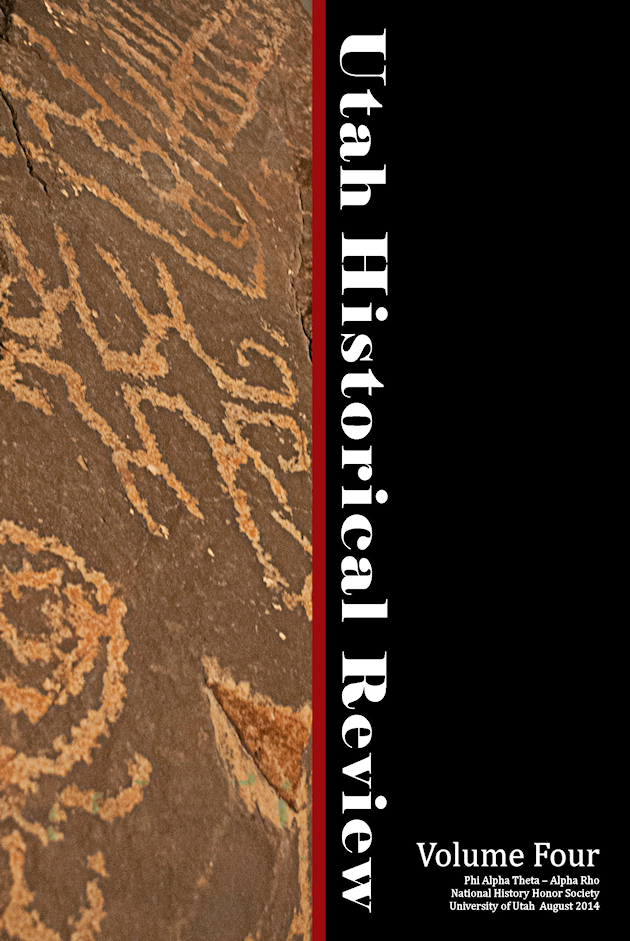The Adaptation of Foundation Legend in Ancient Rome
Abstract
Foundation legends are paramount to understanding the worldview of a culture, whether that culture is alive or dead. These legends speak of virtues valued and boundaries feared, and help both anthropologists and historians view a more fully painted picture of a society. Many foundation legends have survived their cultures, including that of Rome and the tale of brothers Romulus and Remus, descended from Aeneas, twin founders of the great civilization. New scholarship on this famous story has brought to light changes that occurred around the 3rd century BC, including the important and unusual addition and death of the twin Remus. This discovery allows us the rare opportunity to examine how a foundation legend remains fluid throughout the history of its civilization, mutating and adjusting as needed to accommodate for societal changes and worldview adjustments.┬Ā┬Ā ┬Ā Using the anthropological insight of Elizabeth Wayland Barber and Paul T. Barber regarding mythology, the sociological view of Emile Durkheim regarding religion, and the groundbreaking scholarship of T.P. Wiseman on the legend itself, this paper will identify changes to the story of Remus and Romulus, and offer argument that said changes occurred thanks to contemporaneous Roman societyŌĆÖs need for a second founder to be legitimized in its foundation legend and, by extension, its civil religion.This Non-Exclusive License Agreement for Authors ("Agreement")
is entered into between the undersigned "Author" and Phi Alpha Theta - Alpha Rho (Utah, USA) ("Licensee"),
for the purpose of use and distribution of Author's academic works ("Works") as part of the chapter's history journal ("Journal").
Ā
AUTHOR
1. Author warrants that Author is the owner of all Works submitted to the Licensee.ĀĀAuthor hereby warrants and represents that the right granted herein are free of any claims, demands, exclusive licenses, or other encumbrances.ĀĀAuthor warrants that Author has the sole and exclusive right to license, administer and control all uses, in whole or in part.
2. Author warrants and represents that Author has the exclusive legal right and authority to enter into this agreement and hereby grants the Licensee the right to reproduce, distribute, sell and otherwise use Author's Works as part of Journal regardless of media of distribution.
3.ĀĀAuthor agrees that Author is responsible for the acts and costs of registering and defending Author's copyrights and trademarks for all Works submitted to the Licensee.ĀĀAt no time shall the production, representation, and/or distribution of the Author's Works by the Licensee constitute an ownership or responsibility by the Licensee for said Works.
4.ĀĀAuthor is deemed to have licensed the Works free of charge for the purposes of duplication, manufacture, distribution and representation to the Licensee and hereby releases the Licensee in perpetuity from paying any royalties, distribution fees, licensing fees, or wholesale costs for any submitted Works.
5.ĀĀAuthor grants Licensee right to use portions of the Works and the Author's likeness in the promotion of Journal.
6.ĀĀAuthor hereby releases the Licensee, its respective representatives, licensees, successors, and assigns from all actions, claims, contracts, damages, judgments and demands whatsoever, in law or in equity, which Author, its assigns, and successors may now, or hereafter, have against the Licensee with regard to the Works, excluding only the terms set forth in this Agreement.
7.ĀĀAuthor hereby agrees to defend, indemnify, and hold the Licensee and its representatives, licensee successors, and assigns harmless from and against any and all damages, costs, liabilities, losses and expenses (including reasonable attorney fees) arising out of or connected with any claim, demand or action by a third party which is inconsistent with any of the warranties, representations or covenants made by Author in the Agreement.
8.ĀĀAuthor represents that the Author is at least 18 years of age and is legally capable of entering into this Agreement.
Ā
LICENSEE
1.ĀĀThe Licensee intends to publish, manufacture, and distribute Journal, which includes the Authors works, in whole or in part.ĀThis published material is to be distributed through any legal means by the Licensee in any and all countries the Licensee sees fit.
2. Licensee intends to maintain Journal in electronic format on private servers; however, as an collection of academic works, Journal may be entered into the University of Utah'sĀOpen Access Institutional RepositoryĀ(IR) at the discretion of the managing authorities of that repository.
Ā
GENERAL AGREEMENT
1.ĀĀThis Agreement constitutes the entire Agreement between the parties and shall be construed in accordance with the laws of the State of Utah.ĀĀAny dispute or disagreement with respect to this Agreement shall be submitted to arbitration where Utah Law is controlling.ĀĀThis Agreement may not be modified except in writing signed by both parties.ĀĀA waiver off any breach by either party in any instance shall not constitute a waiver of any subsequent breach, whether or not similar.Ā
2.ĀĀThe Author may, at any time, elect to dissolve this Agreement in whole through written correspondence.ĀĀAt such time the Licensee will not include the Author's Works in any new editions of existing Journal or in or as part of any new Journal.Ā
3.ĀĀCorrespondence and information exchange between the Author and Licensee will be acceptable through electronic means (i.e. email) so long as the exchange is documented and occurs between the Author and Licensee through agreed channels.
4.ĀĀThis Non-Exclusive License Agreement for Graphic Authors is identical to all other Agreements made with other Authors for Non-Exclusive Use by the Licensee.
5.ĀĀAll legal notice hereunder shall be in writing and delivered to: Phi Alpha Theta - Alpha Rho, Carolyn Tanner Irish Humanities Building, 215 S. Central Campus Dr. Room 310, Salt Lake City, UT 84112.
Ā
Ā
SUMMARY
Authors retain copyright but grant the journal right of first publication in all digital and print mediums.ĀĀThe journal will not pay the author any fees or royalties as a part of this agreement.
Ā
Ā



